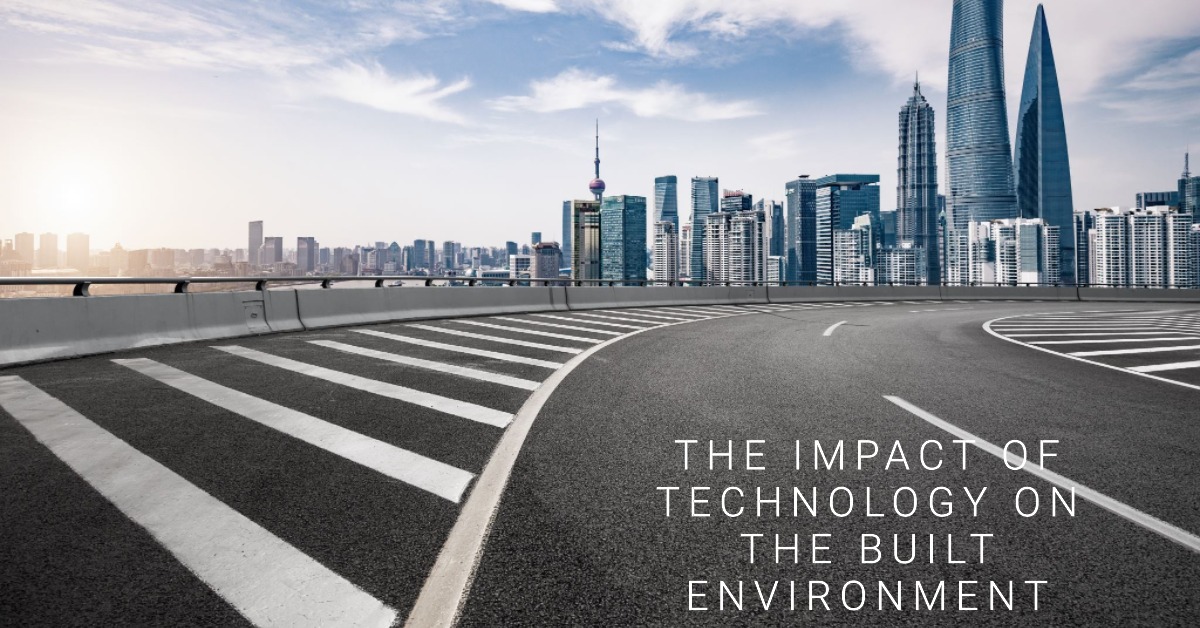
The impact of Technology on the Built Environment
The term “built environment” usually refers to man-made surroundings that include buildings, infrastructure, landscapes, public areas, and all the things that serve as the groundwork for human activities. It includes everything that can influence how we conduct our daily lives, how we live or interact with our surroundings and how are we influenced by the environment around us. It not only includes buildings but all the spaces such as transportation networks, utility networks, telecommunications, and many more.
Emerging technologies have a great impact and capacity to change the built environments. In the sectors like biotechnology, information, education, and construction, diverse technologies such as cognitive science, robotics, and artificial intelligence are emerging. These technologies stand for the advancements needed for rapid development.
Out of all these sectors, major advancements have been observed in the field of architecture and design. Corresponding to these developments, there has been upgradation of cities from rural to smart cities and the future of real estate industry is rapidly changing owing to the advancements in the sector like AI, robotics, and Internet of Things (IoT).
Technological advancements in architecture and design
One of the most rapidly changing environments today is architecture and design, and the introduction of BIM (Building Information Modelling) has changed the way buildings are now planned, designed, visualized, and constructed. The role of BIM Services in revolutionizing this sector has been immense. Further, BIM with its exceptional features like cloud-based technology, automation, and enhanced collaborative environment has taken over the world letting all the involved stakeholders work once at a time.
Modern technology and its impact on the built environment along with computer-aided design (CAD) has enabled the designers to create intricate and precise designs while BIM has streamlined the collaboration and project management. In addition to this, sustainable and green building technologies have emerged which has led the design community to opt for renewable energy sources, smart grid systems, and more sustainable approaches.
Construction techniques and materials also got to a new level with the introduction of prefabrication and modular construction and innovative materials such as carbon fibre, flexible concrete, liquid granite, and 3d printing. These innovations keep emerging, making the built environment more and more smart and advanced.
Advancements in construction methods and material like use of high-performance insulation, energy efficient openings, use of kinetic facades have reduced the energy consumption in turn providing a modern and sustainable take on the buildings. Moreover, use of smart phones has enabled users to access various information on built environments in real time.
Positive impacts of technology on the built environment
As a result of this advanced technology, we can achieve faster construction processes, reduced labour needs along with an easy-going communication, better visualization and benefits in terms of cost cutting. Furthermore, by including greener and sustainable technologies, use of energy has been reduced and a drop has also been seen in carbon footprint and waste generations which is making a very friendlier environment and habitable to all.
Apart from being sustainable, the best use of technology has been seen in the use of sensors and automations in the buildings which has proved life-saving and intelligent technology to mankind. These technologies have made possible to detect the forth coming issues at an early stage which helps mitigate them. Use of sensing and automation technologies have made the buildings operate in a much smarter way.
Use of Augmented reality (AR) and Virtual reality (VR) along with Internet of Things (IoT) has made it possible for the designers to see their design in real environments or virtual depending on the choices. This technology has entirely changed the take on design decisions and its executions.
Challenges and concerns to overcome while technology offers numerous benefits
While technology is offering number of benefits, there are certain concerns that may arise. As much as the smart sensing and automation technology makes it easier, it also induces the potent security and privacy risks that comes forward from exposing the built environment to smart technology and IoT. As a preventive measure to this, a very robust cyber knowledge and security is a must.
Concerning the amount of technology we are using, it may make humans entirely dependent on the technology thereby killing the inner creative potential one has. Moreover, at times the software errors or lack of knowledge can also contribute to possible errors as a software can’t compute all the possible areas of errors that can hamper the final design.
Technology is a boon but in the field like architecture and design, it is utmost necessary that technology is used just as a tool to make things easier and smart and not the technology let alone take the decisions which can prove not to be beneficial for the built environment.
Technology’s impact on the built environment
Technology will always continue to evolve and emerge thereby shaping the built environment. Artificial intelligence and machinery along with IoT will always optimize the energy use, channelize the traffic in many sectors and urban planning. The IoT will help make the cities remain interconnected with each-other while developing them individually. But it should always be ensured that we still prioritize human-centred designs considering user requirements, well-being, and ethical considerations in technological advancements
Technology has undoubtedly revolutionized the built environment which has encouraged sustainable and efficient designs and developments. From historic to present-day advances, many things have transformed, the way we design, construct and live in our surroundings. By promoting responsible and sustainable technological developments, we together can build and shape a better and more sustainable built environment. Using efficient technologies and processes such as Revit BIM Services to execute architectural and construction projects improves the efficiency of the project while making the buildings more sustainable.
Conclusion
The role of technology in the built environment will always remain prominent as it will continuously keep changing and evolving it while providing newer features However, it very important to strike a balance between embracing technology’s potential and handling the challenges and risks that come along with it so that it is made sure that we headed towards a better future and better built environment.



